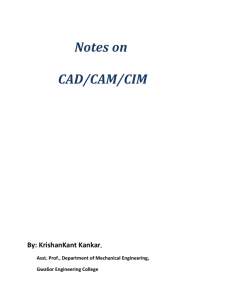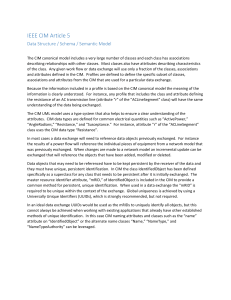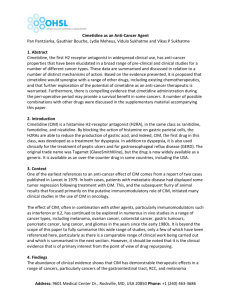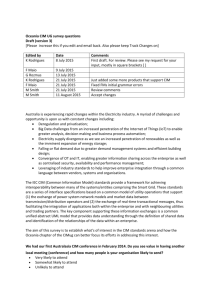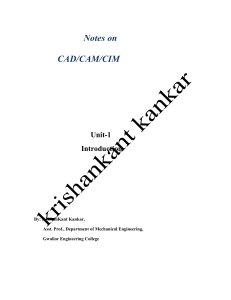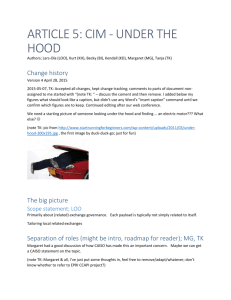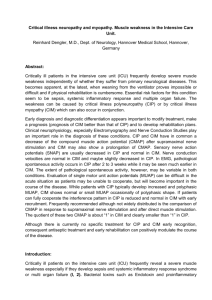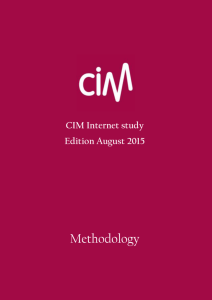Extended statistical entropy analysis for the evaluation of nitrogen
advertisement
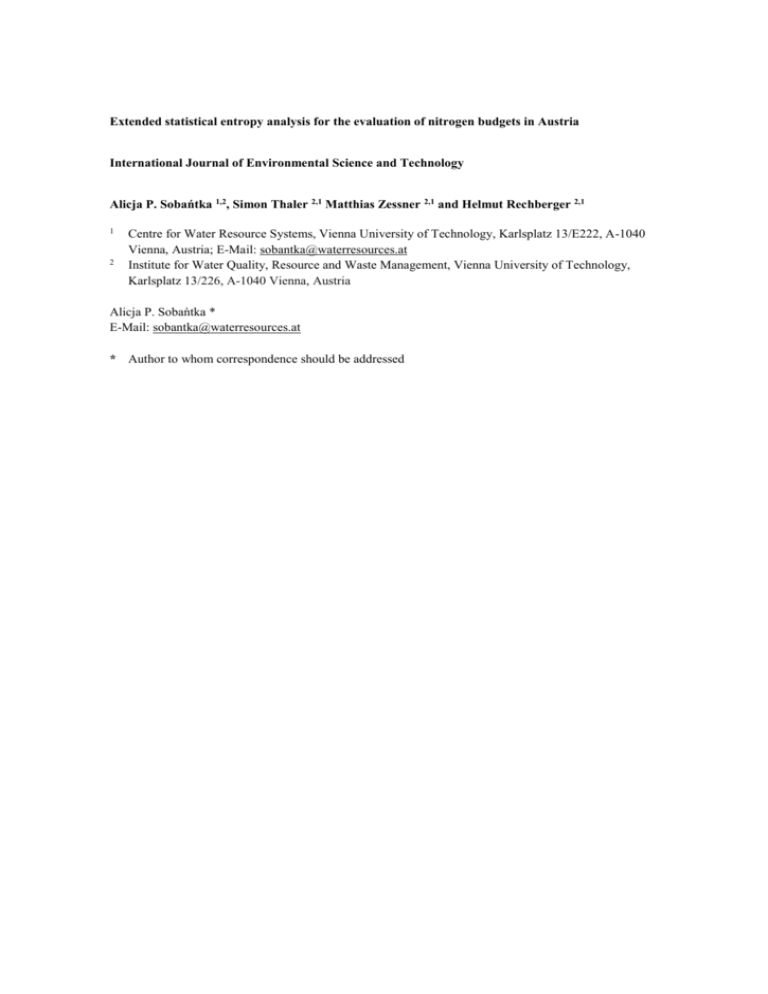
Extended statistical entropy analysis for the evaluation of nitrogen budgets in Austria International Journal of Environmental Science and Technology Alicja P. Sobańtka 1,2, Simon Thaler 2,1 Matthias Zessner 2,1 and Helmut Rechberger 2,1 1 2 Centre for Water Resource Systems, Vienna University of Technology, Karlsplatz 13/E222, A-1040 Vienna, Austria; E-Mail: sobantka@waterresources.at Institute for Water Quality, Resource and Waste Management, Vienna University of Technology, Karlsplatz 13/226, A-1040 Vienna, Austria Alicja P. Sobańtka * E-Mail: sobantka@waterresources.at * Author to whom correspondence should be addressed Supplementary material 2. Materials and methods 2.2. Extended statistical entropy analysis (eSEA) In this section, the computation of eSEA is explained in greater detail. Table 1 summarizes the equations that are required for eSEA applications. Step 1: measured data Mi ,cim ,cim,geog Step 2: normalization of the material flow mim Mi (1) where X im M i *cim (2) Xim i m mim mi * Step 3: calculation of the diluting masses of each N-compound Step 4: computation of the statistical entropy cim cim cim,geog cim,geog *100 mi (3) and cim *cim,geog cim 0.99*cim,geog *0.01 (4) H(mim ,cim ) mim *cim *log 2 (cim ) (5) i m Table 1 Brief overview of the computation of the statistical entropy of N compounds that are processed as a result of agricultural activities 𝑀̇𝑖 denotes the measured material flow in kg per year. The index i refers to animal feedstuffs, sludge, compost, fertilizer, seeds, off-gas, runoff, leachate, and plant-based and animal-based products. The variable cim (in kgN/kg) corresponds to the measured concentration of an N compound in the particular material flow i. The N compounds (e.g., NO3-, NH4+) are indexed by m. The background concentration of a compound m in an environmental compartment i is indicated by the variable cim,geog. The material flows are normalized according to Equation 1. The denominator of Equation 1 equals the total flow of N through the system such that the masses mi are related to one mass-unit of N (e.g., kg N in the off-gas per kg of the total N throughput). Normalization is required to make processes of different sizes comparable. The statistical entropy of the input is calculated according to Equation 5 using the material flows from Equation 1 and the concentrations cim. In the next step, the diluting mass m'im and the corresponding ′ concentration term 𝑐𝑖𝑚 are calculated according to Equation 3 and Equation 4, respectively. The mass function calculates the mass of surface water, groundwater, or air needed to dilute the emitted concentration to its corresponding background concentration. The dimensionless mass function for the N in the products is computed according to Equation 1 because the products are consumed and not diluted in the environment. The statistical entropy of the output is then calculated according to Equation 5 for every N compound in the runoff, the leachate, the atmosphere, and the products. Greater diluted material flows and greater differences between the emitted and background concentrations result in higher entropy values and, consequently, in increased levels ofdilution in the environment. Given the assumption that dilution should be avoided whenever possible for sustainable resource management, low entropy values are preferable. The entropy values of all emitted N compounds are added to obtain the total statistical entropy of the output (HOUT). The difference between HOUT and HIN, ΔH, indicates the concentrating power relative to the extent of dilution of the system. If HOUT is higher than HIN, the process dilutes N. This outcome is expected for agricultural systems. Lower ΔH values correspond to more favorable levels of N performance for the agricultural system, i.e., smaller amounts of N are dispersed in the environment.
